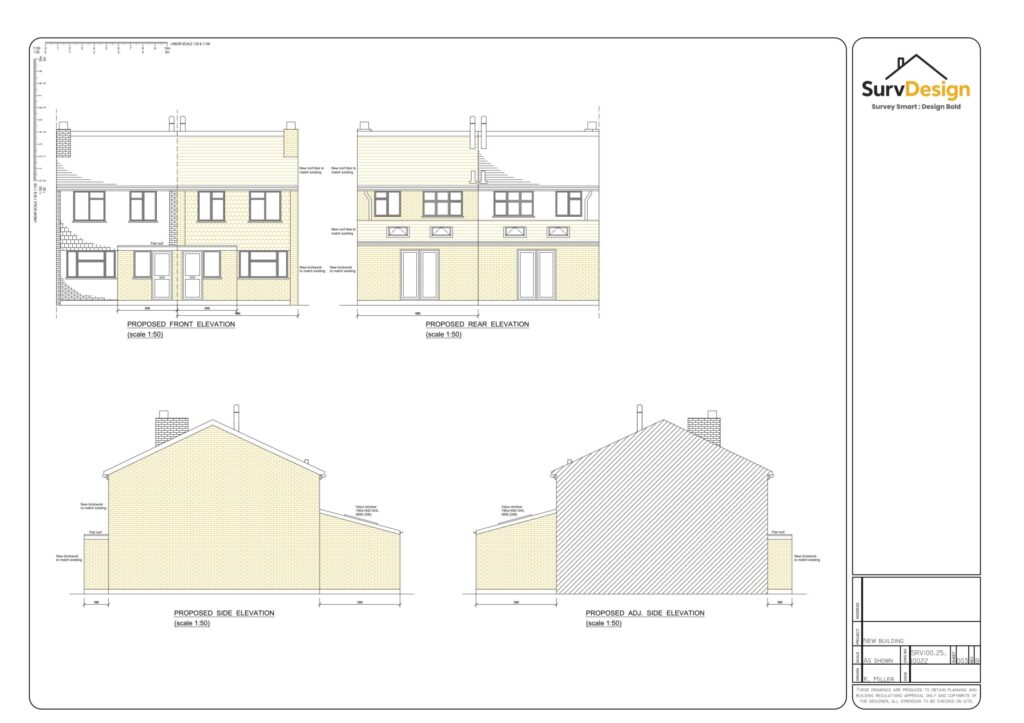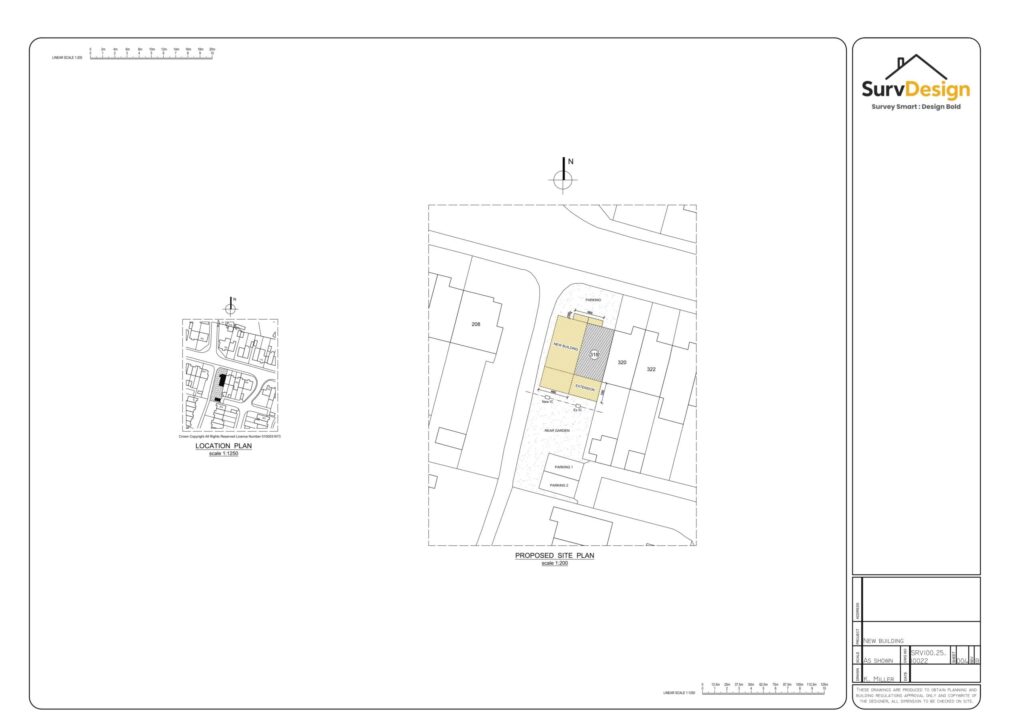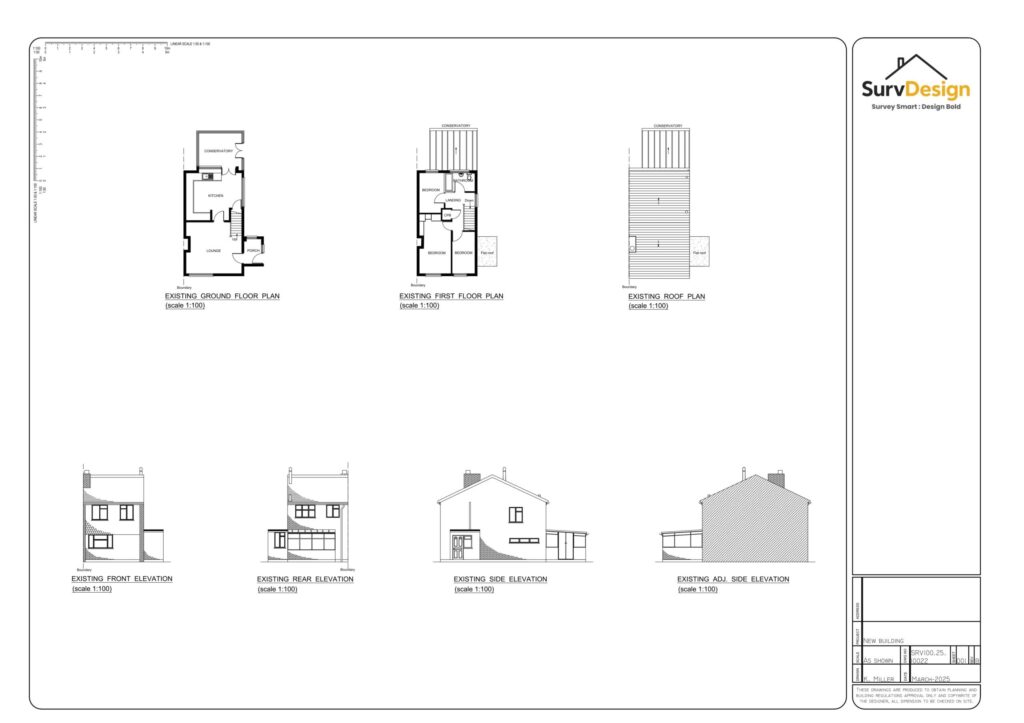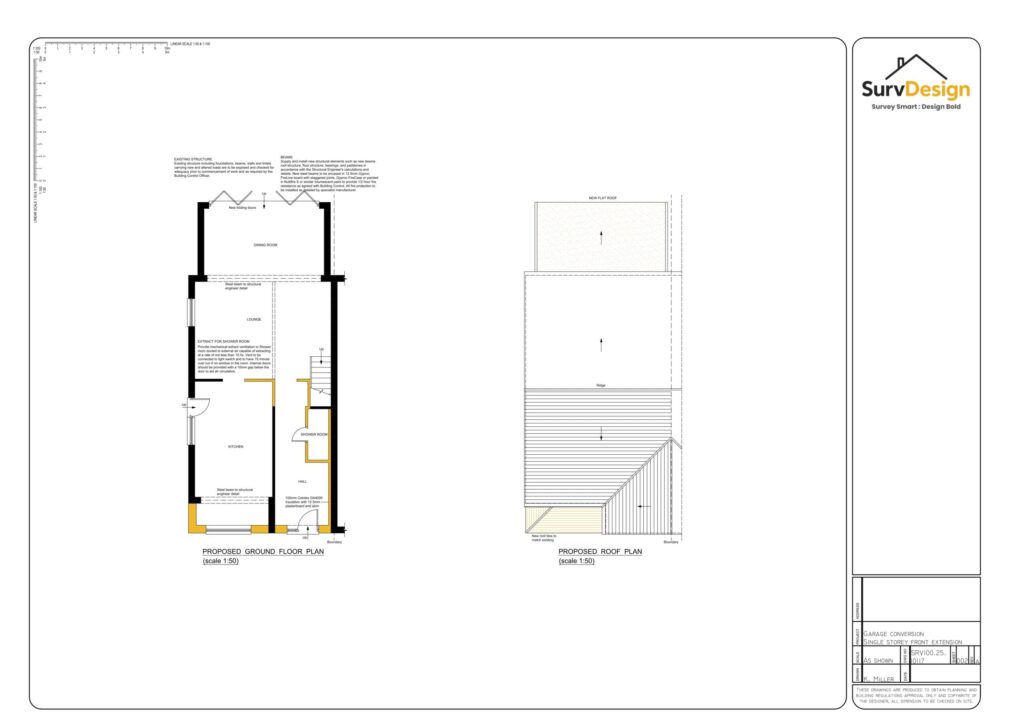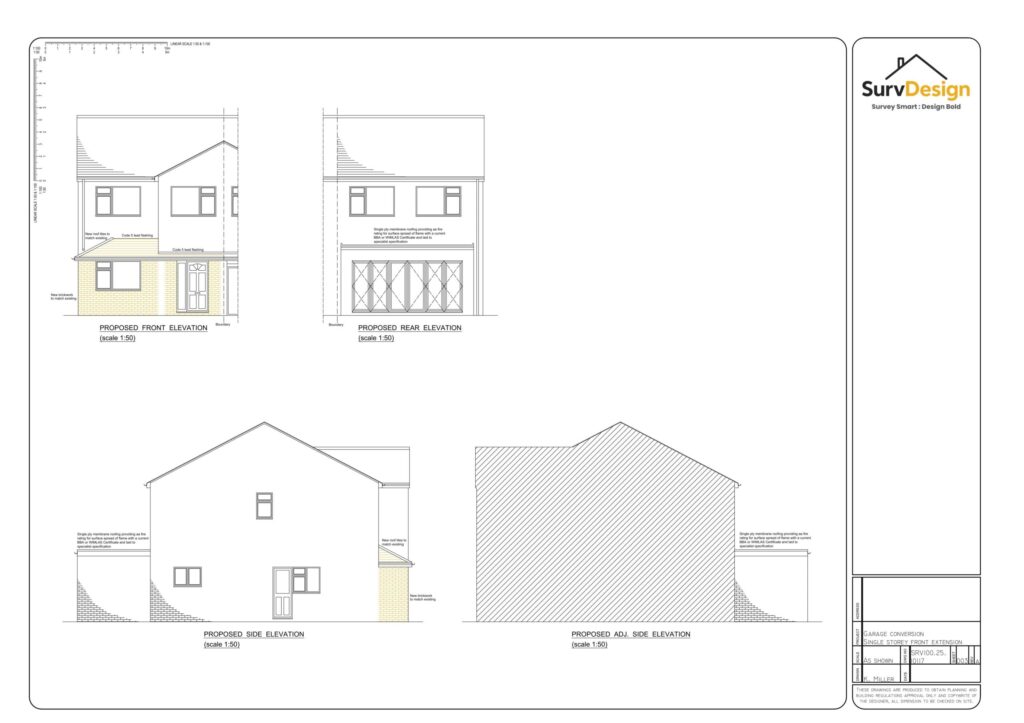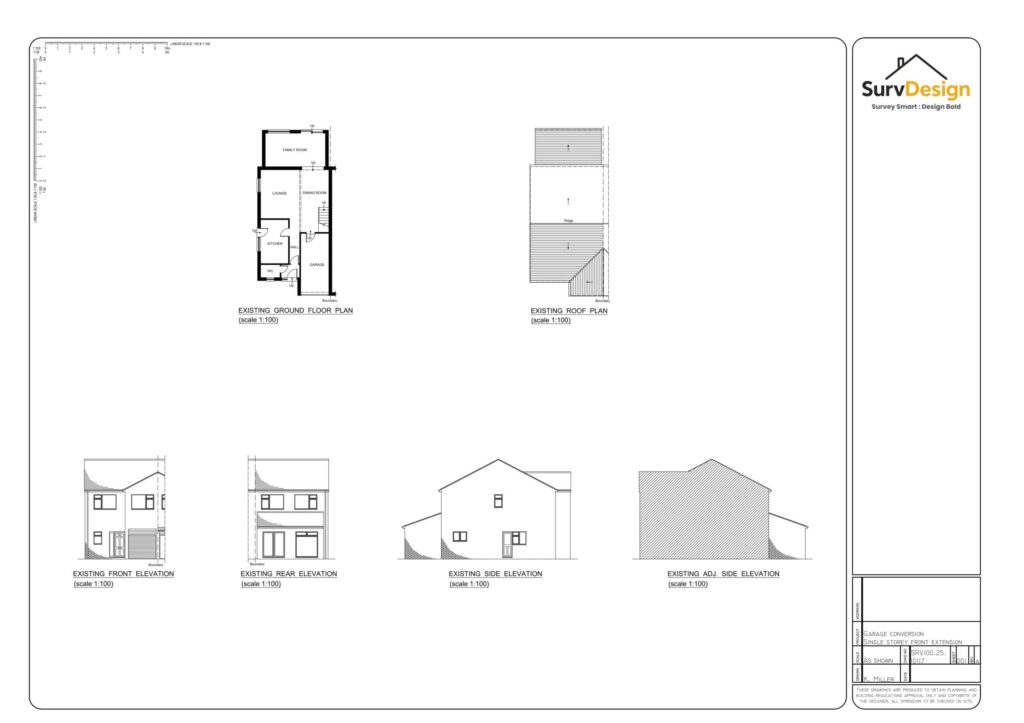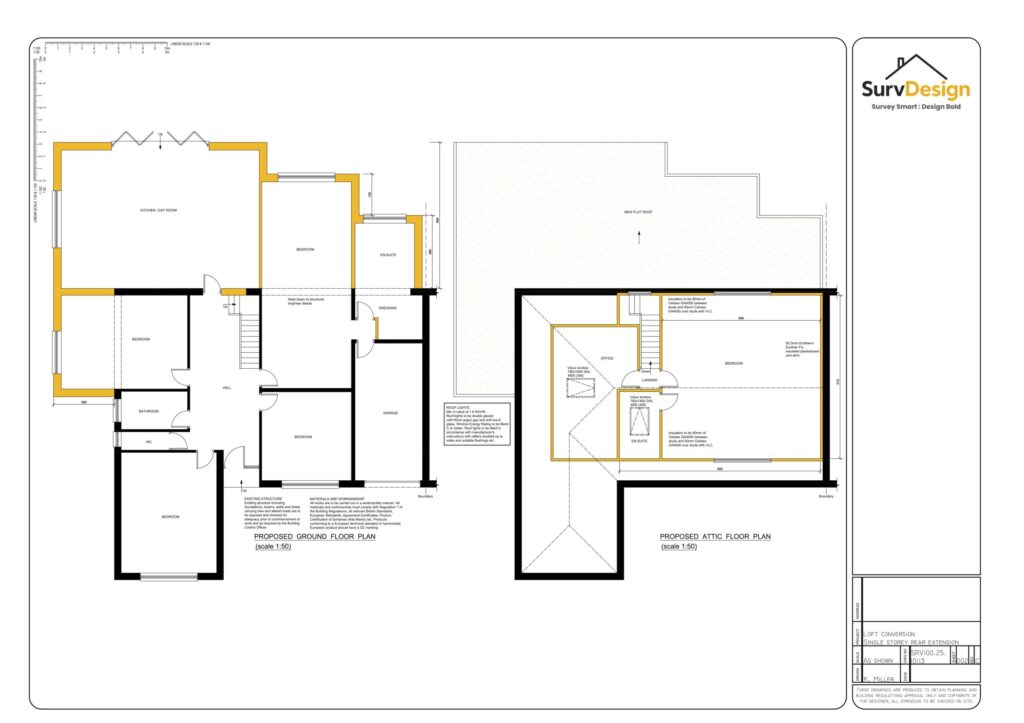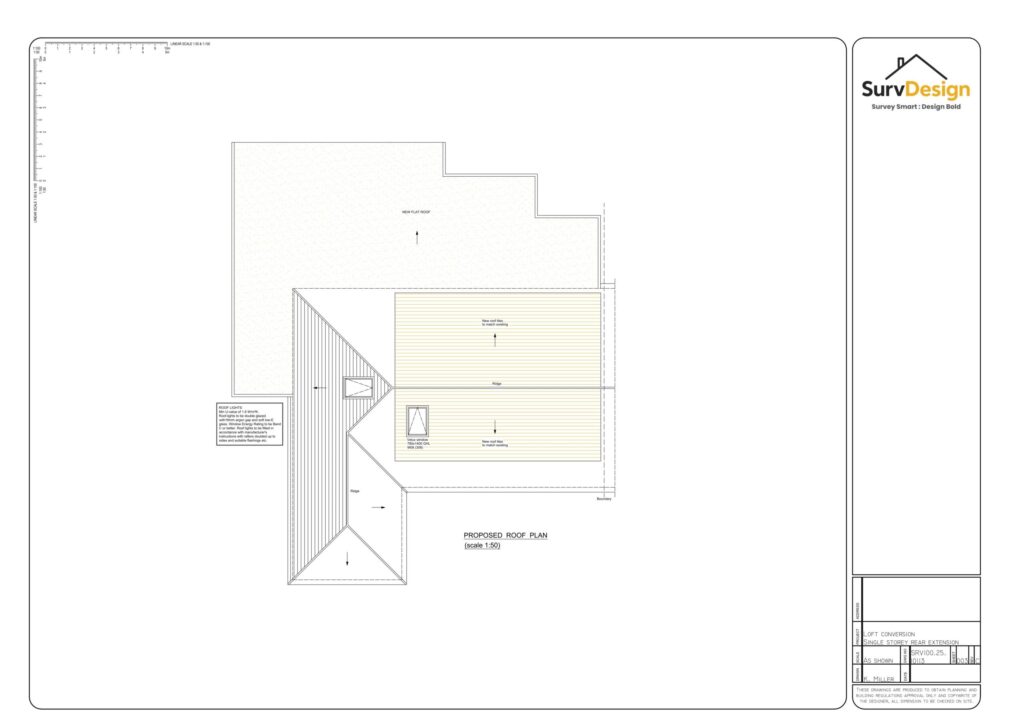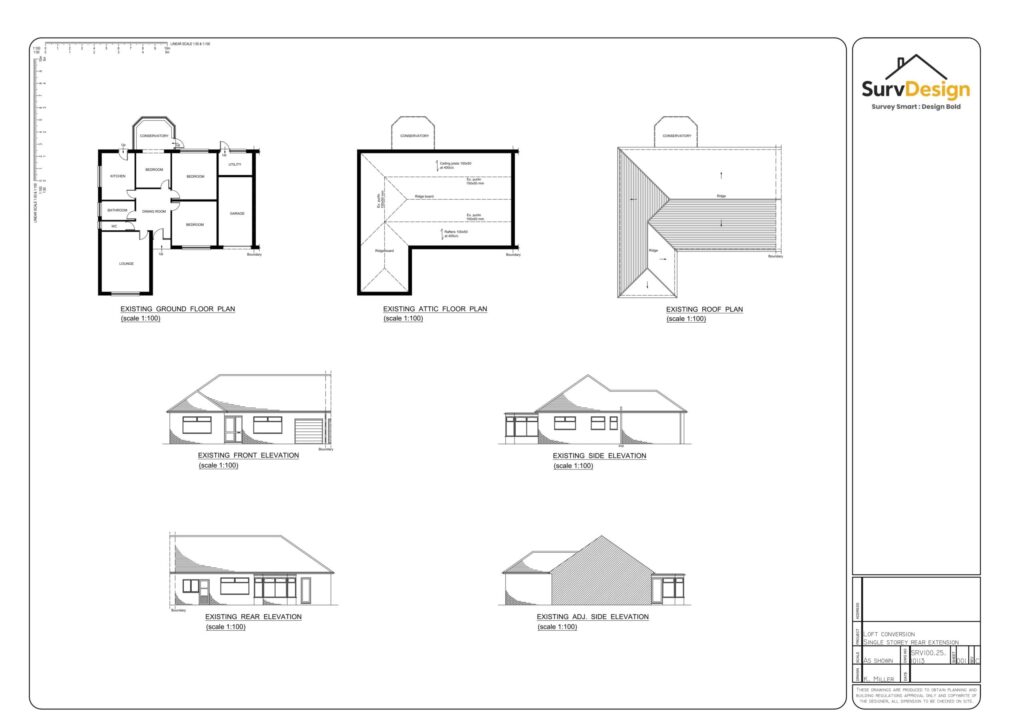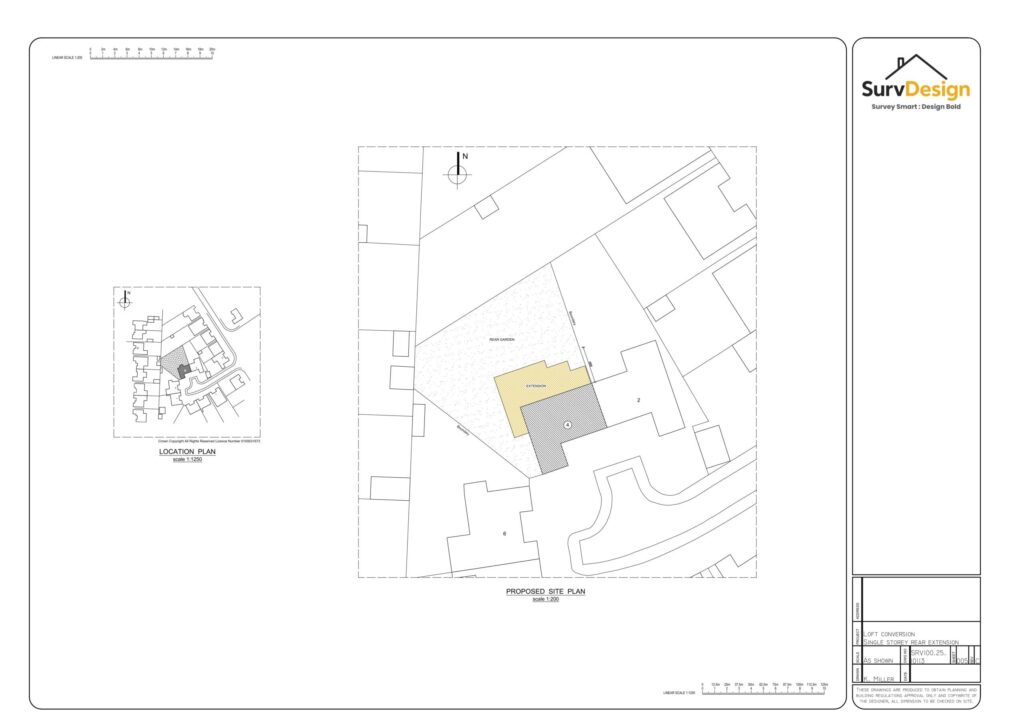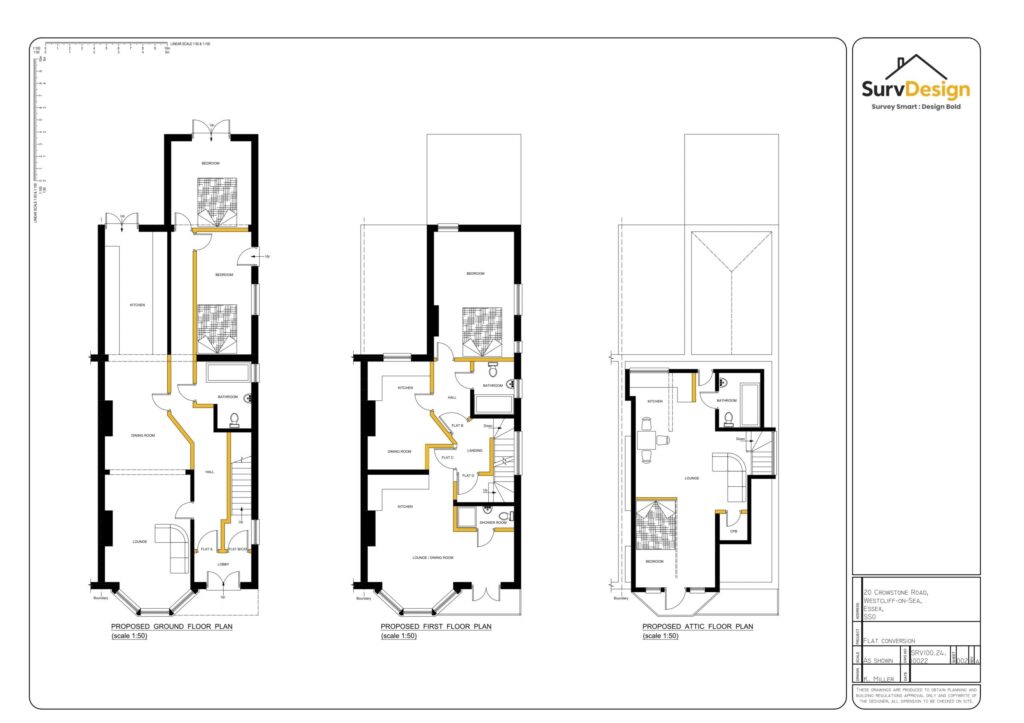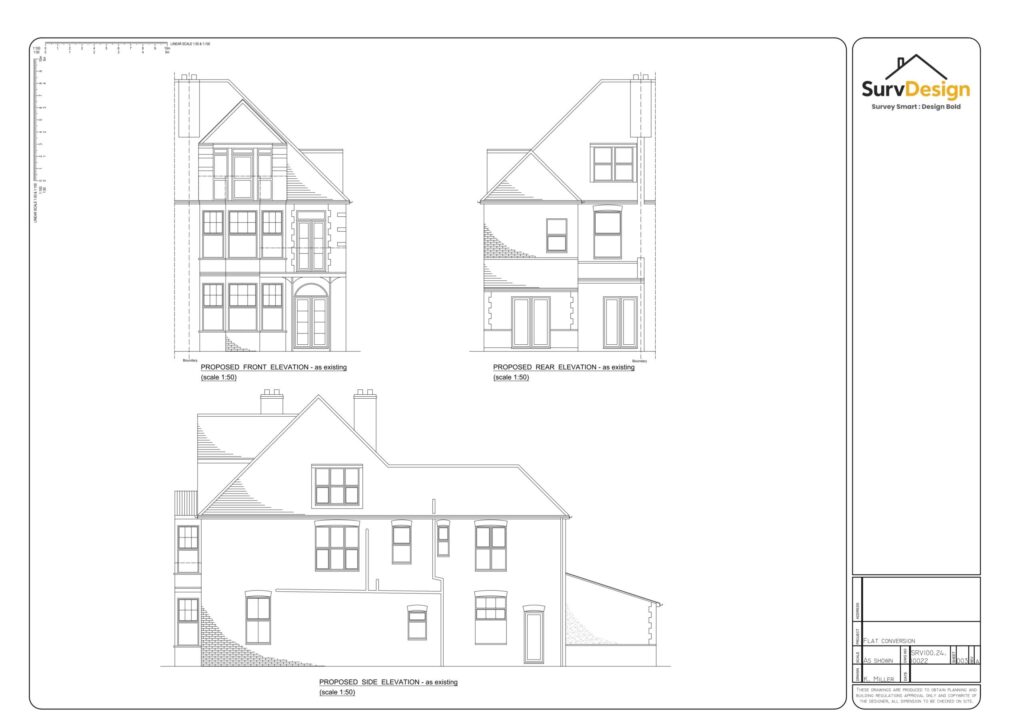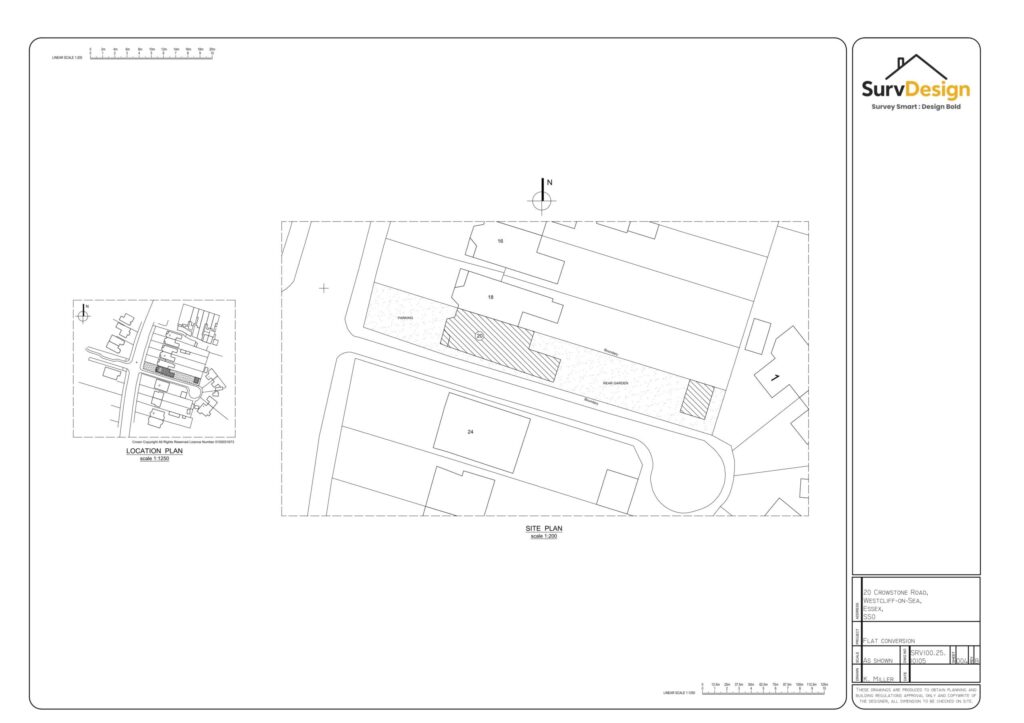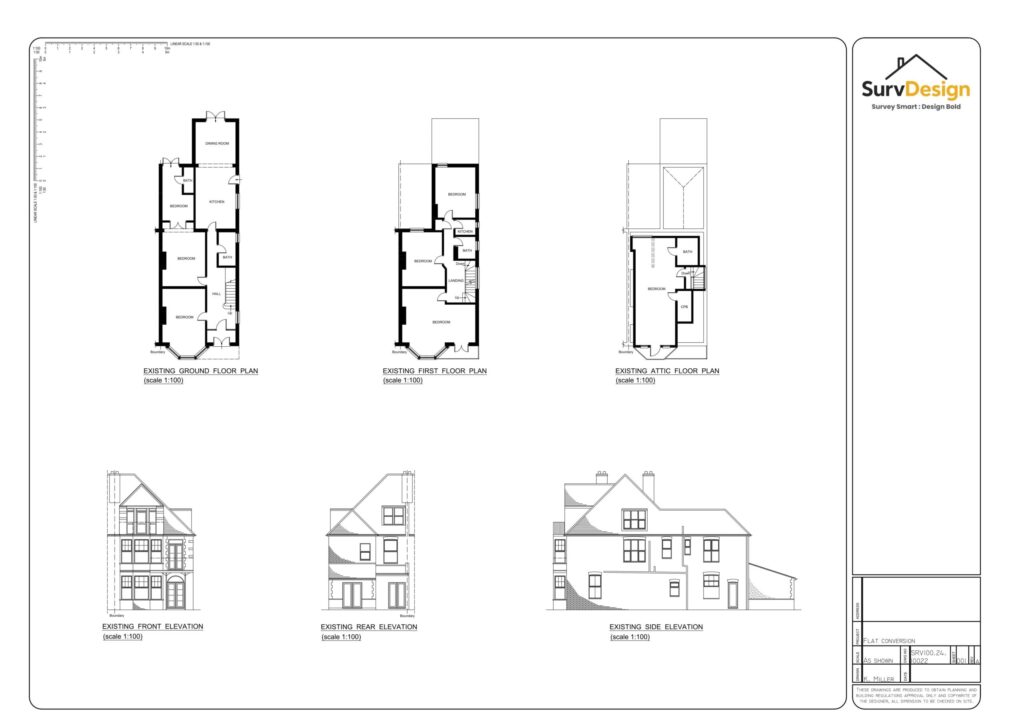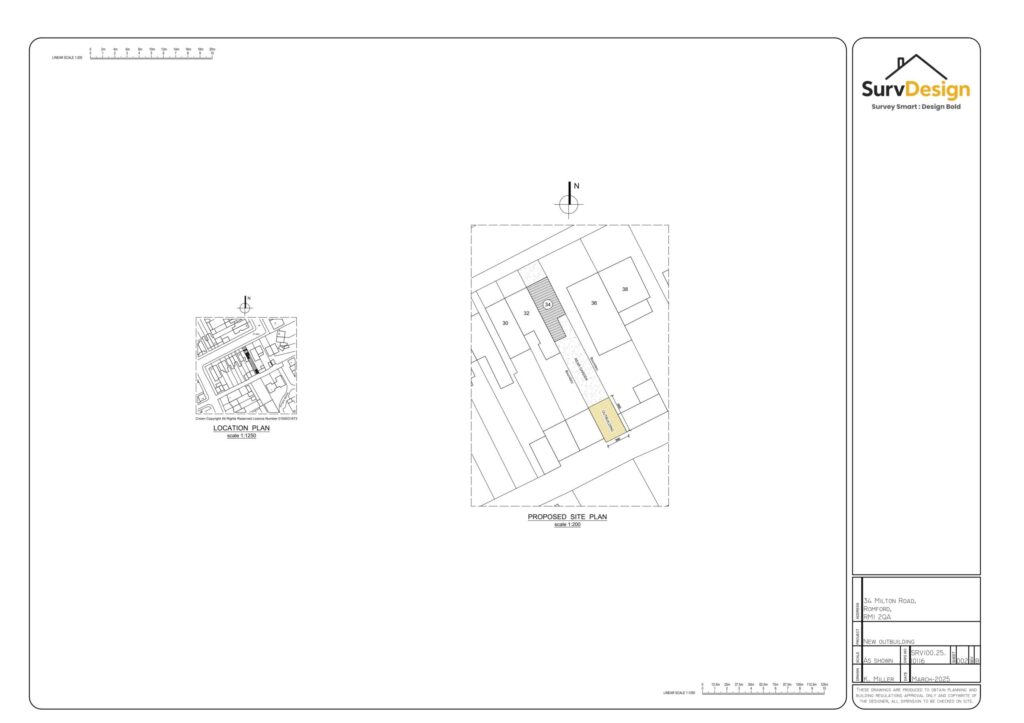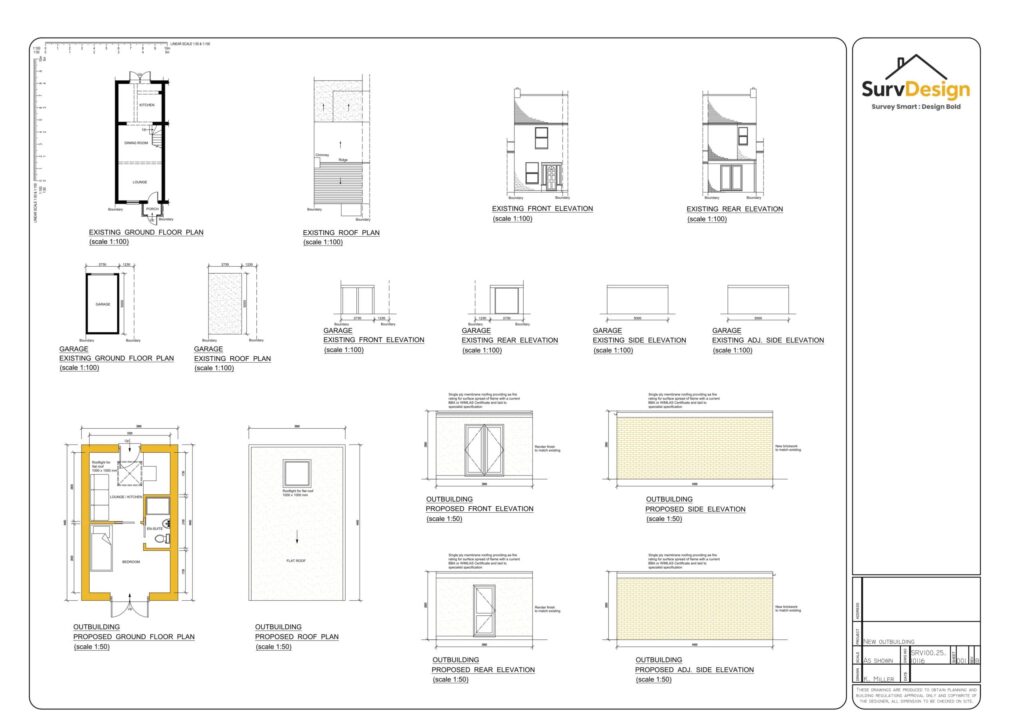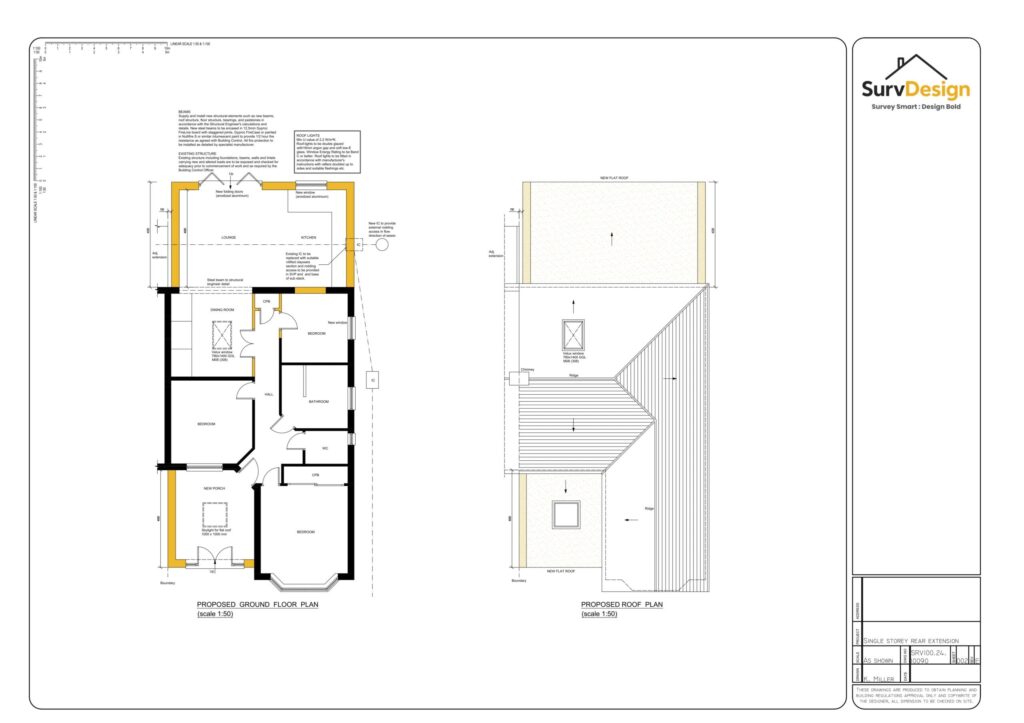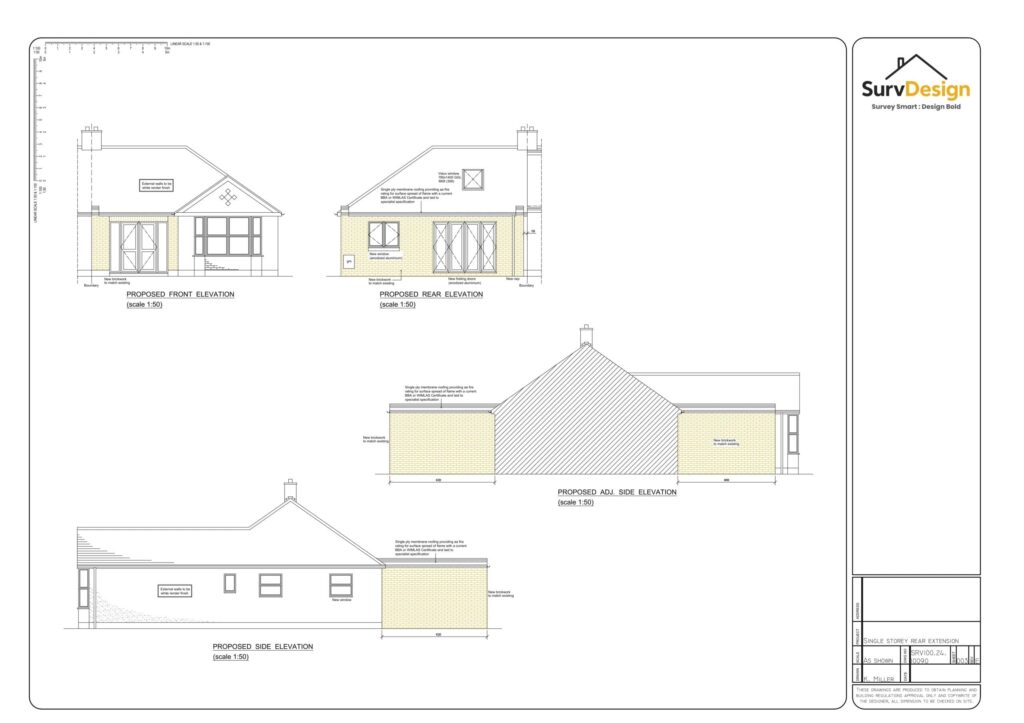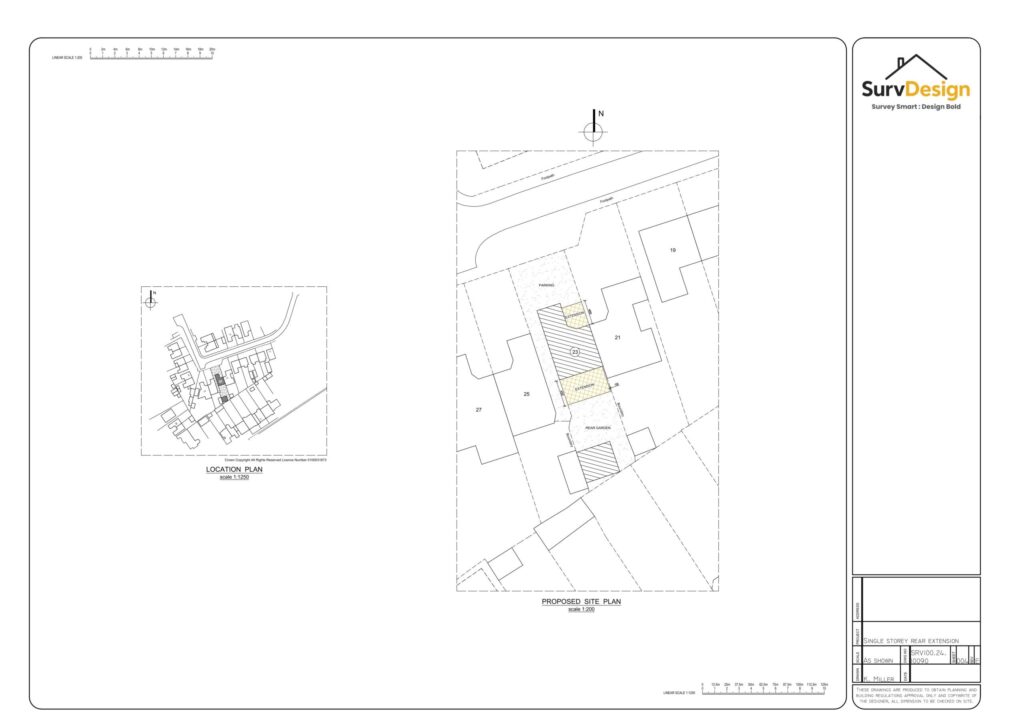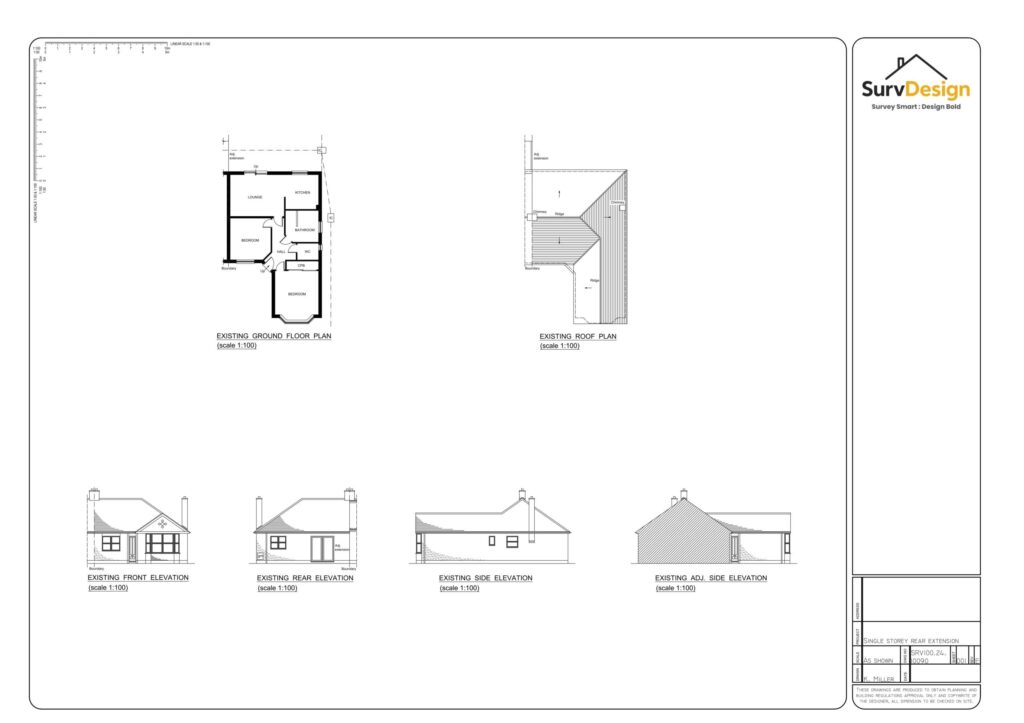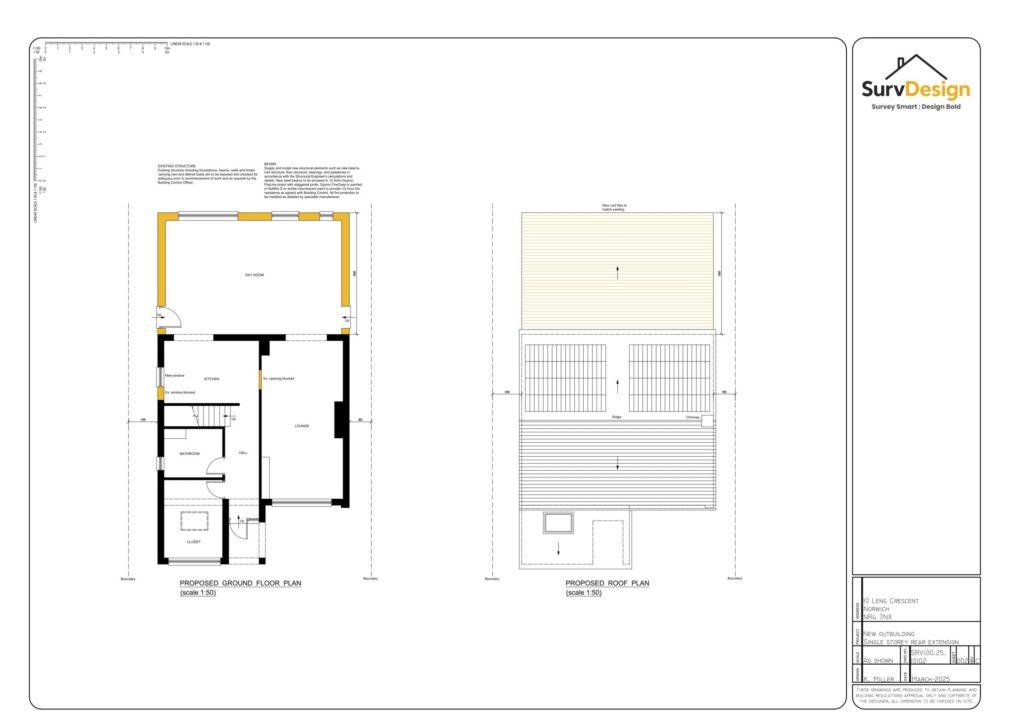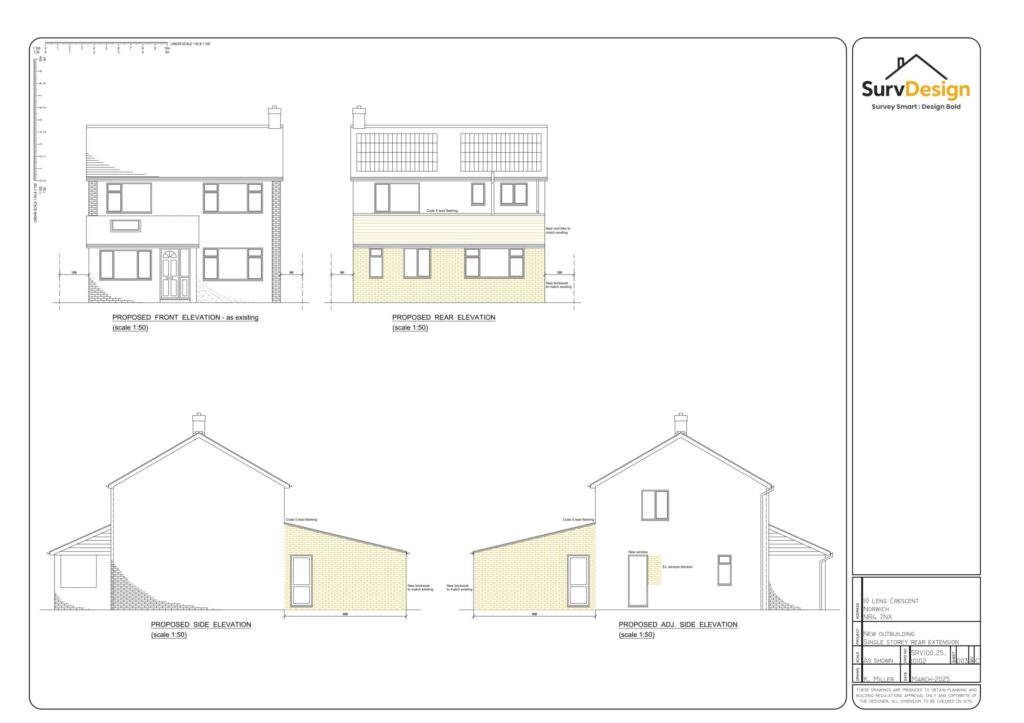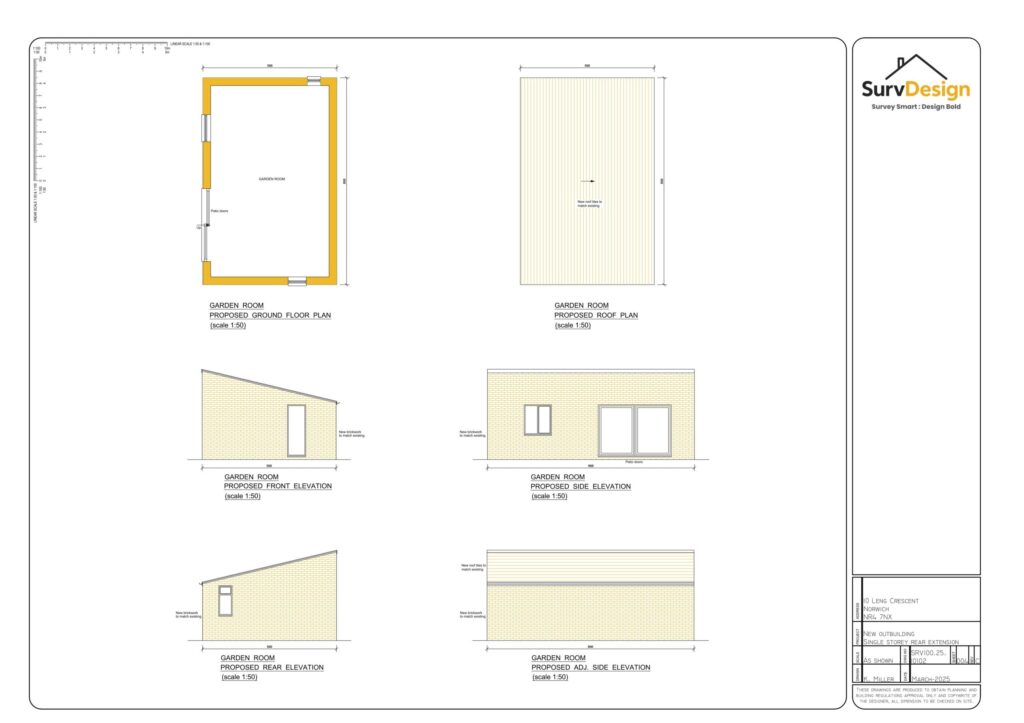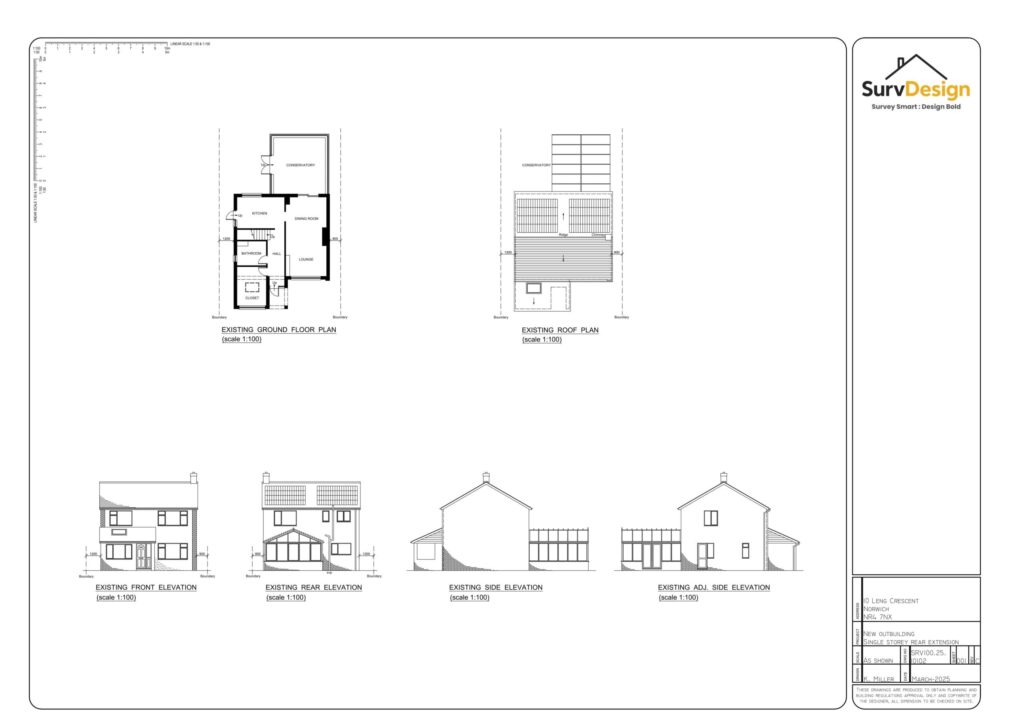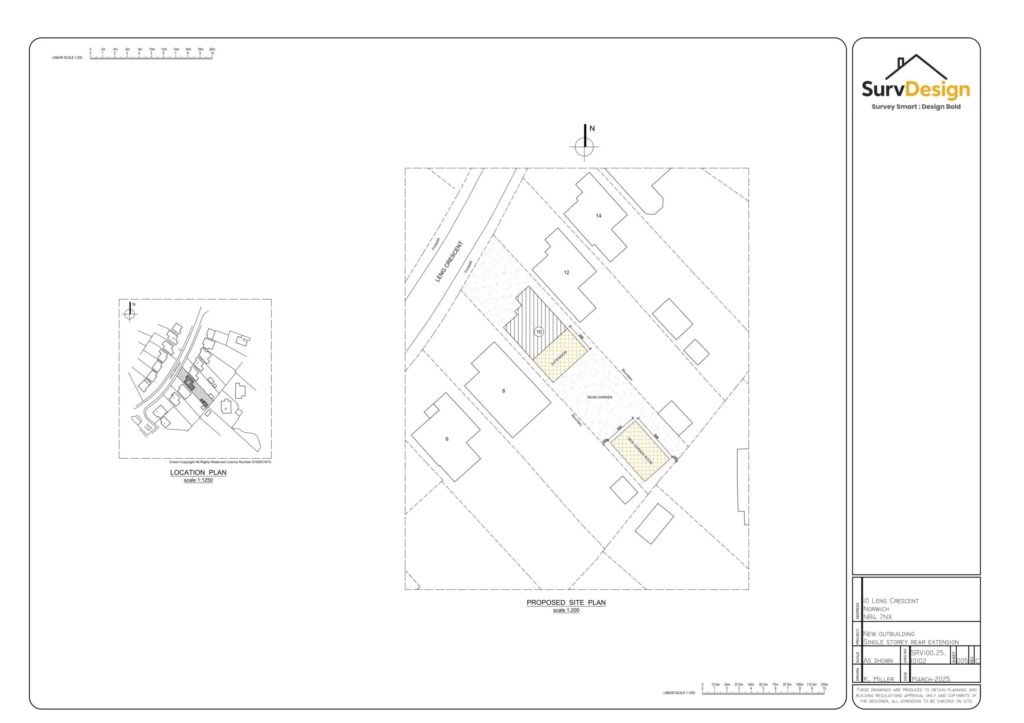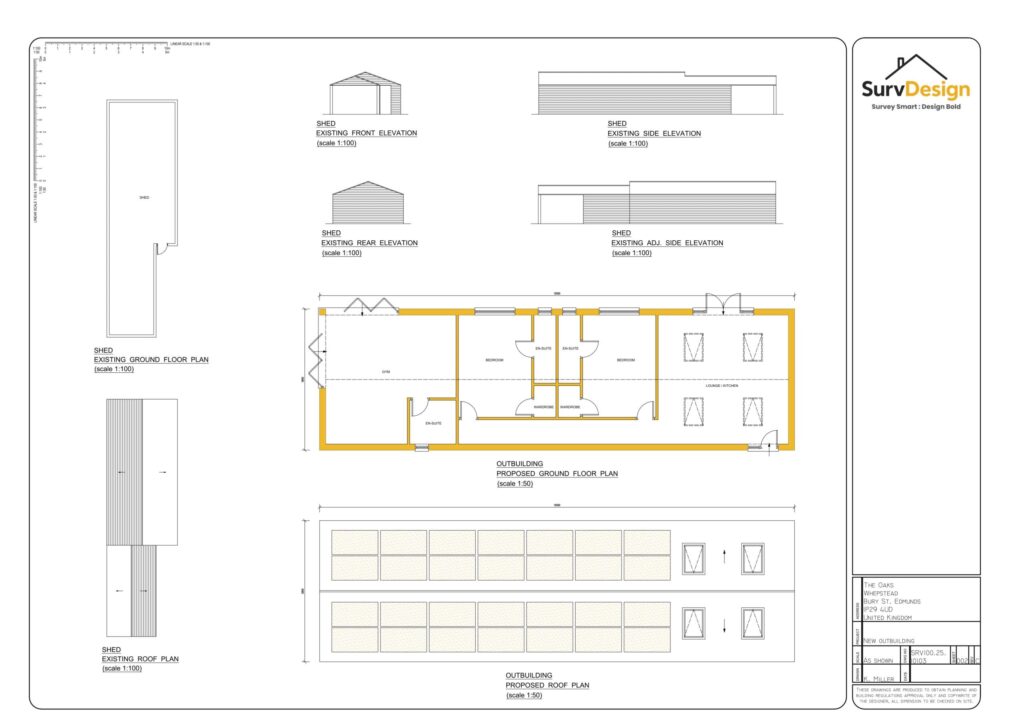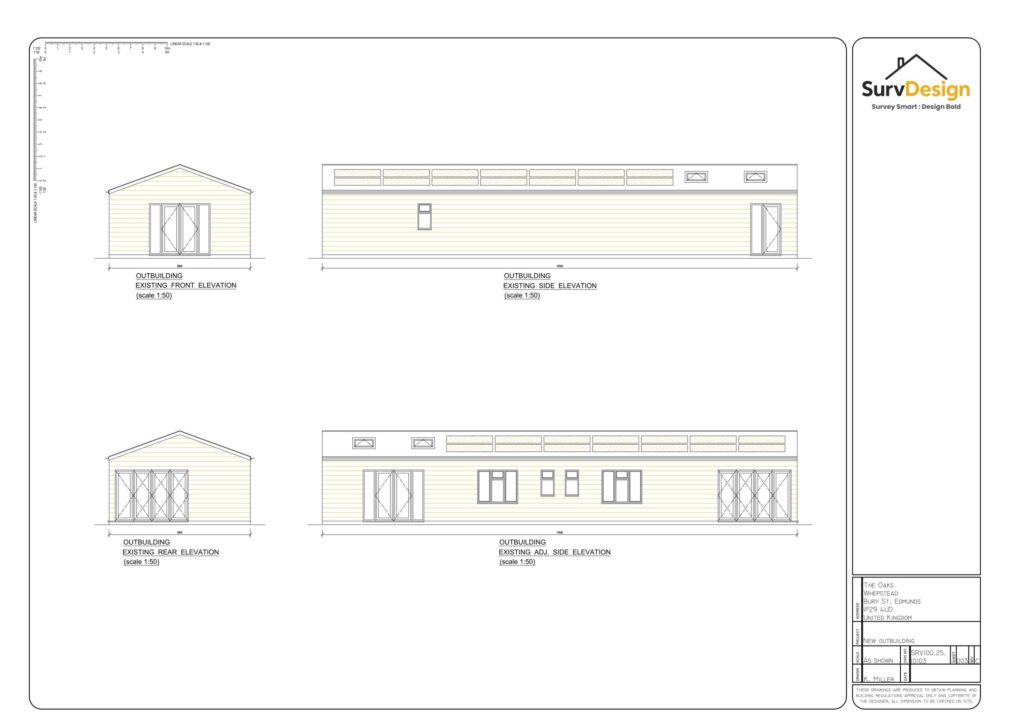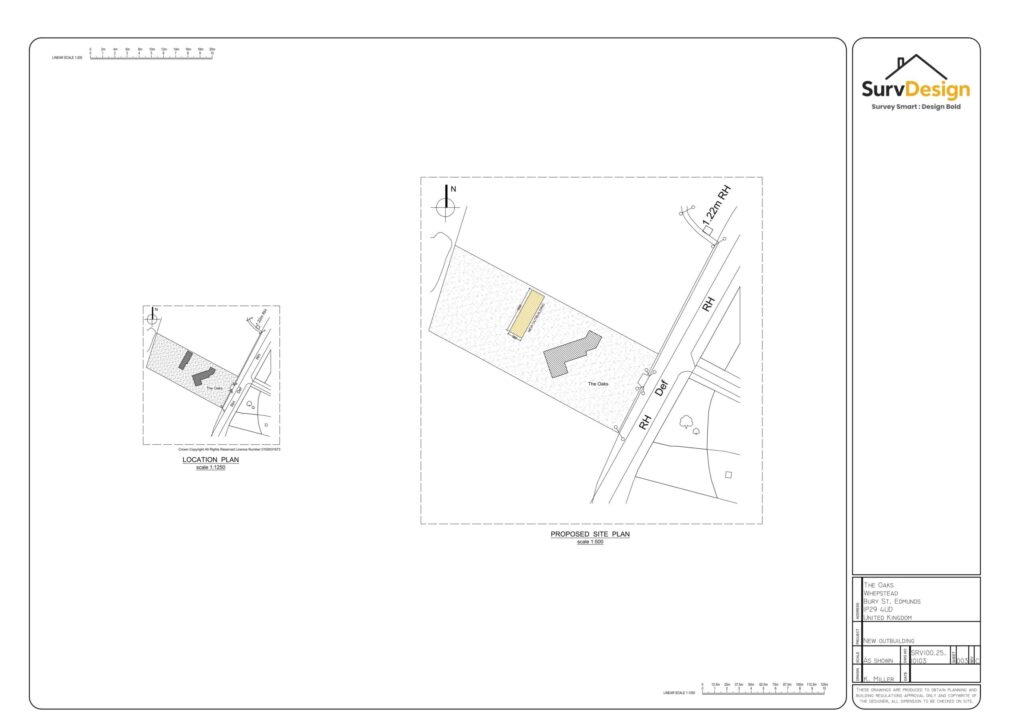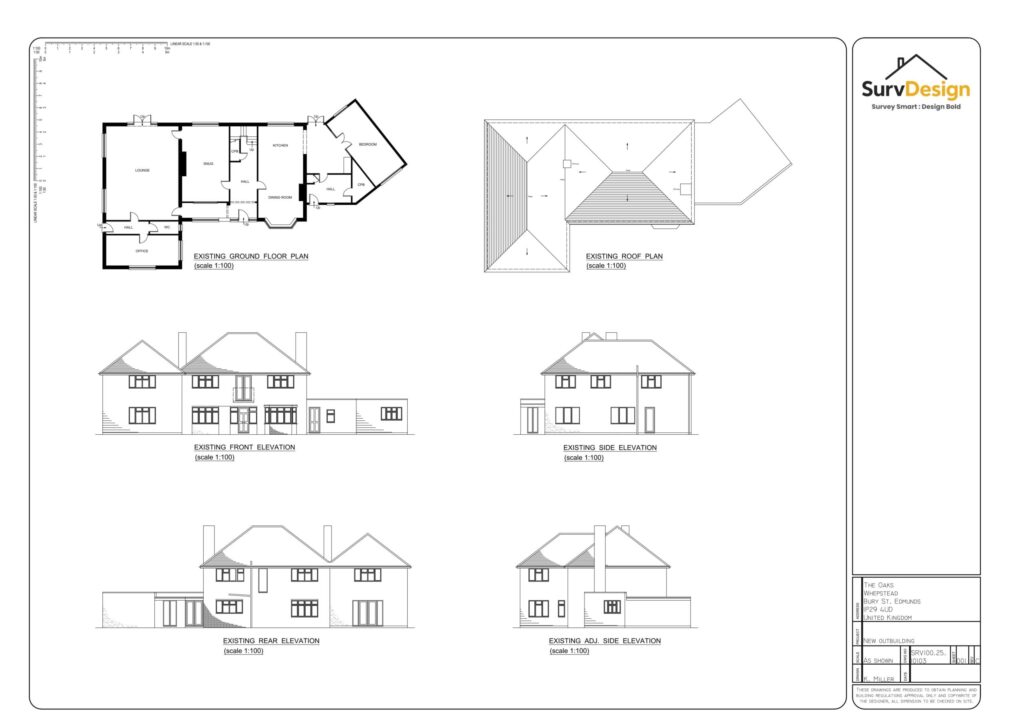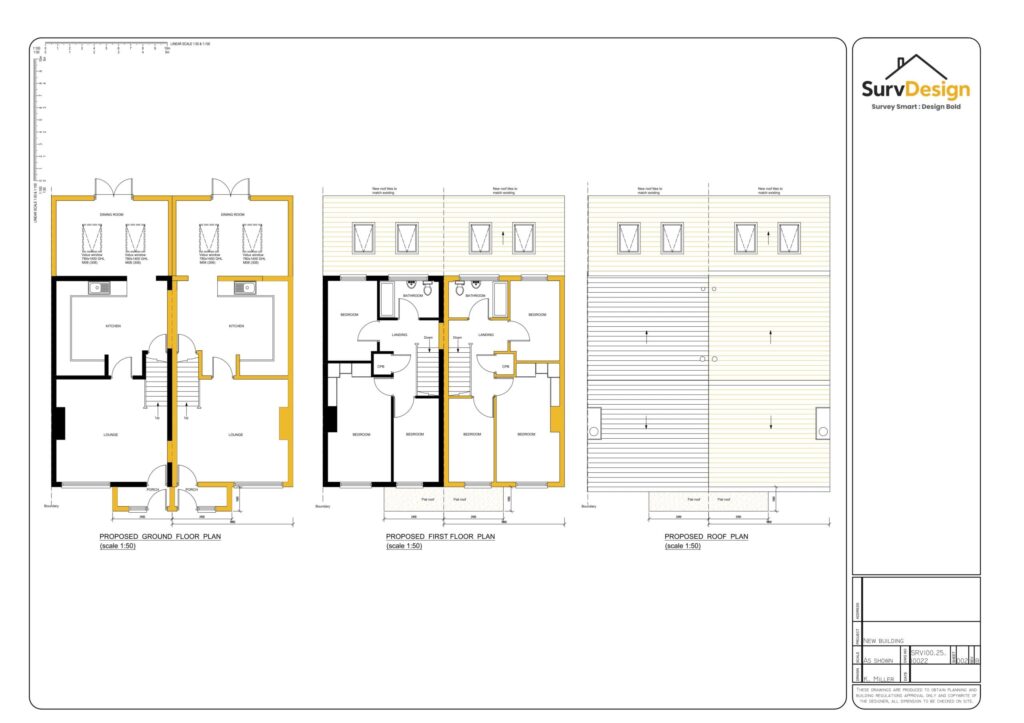
Building Regulations Plans, Drawings & Planning | Building Regulations Application, Drawings, Plans & Checklist for Building Approvals
- Monday to Friday: 08:30 till 17:30
- 0800 494 7023
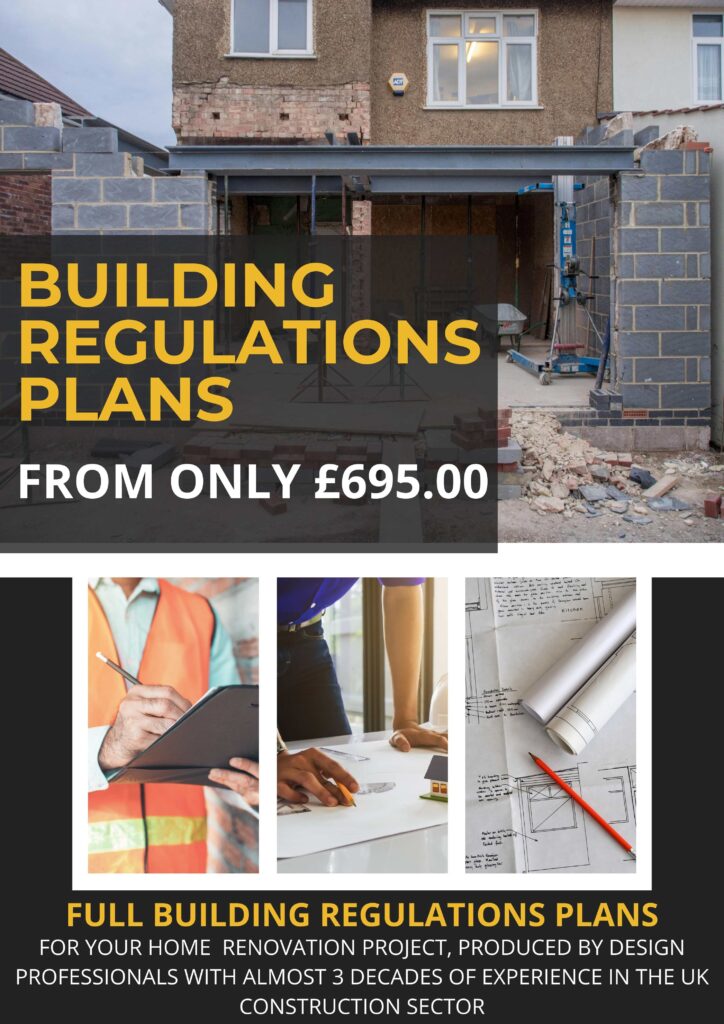
Ready to Build? Let's Get Your Building Regs Plans Sorted.
Extensions, lofts, garage conversions, even full new builds — whatever you’re planning, you’ll need Building Regulations drawings that tick every box. We make the process simple: clear plans, compliant with the rules, submitted to Building Control, and approved without the stress.
Ready to Build? Let's Get Your Building Regs Plans Sorted.
Extensions, lofts, garage conversions, even full new builds — whatever you’re planning, you’ll need Building Regulations drawings that tick every box. We make the process simple: clear plans, compliant with the rules, submitted to Building Control, and approved without the stress.
💷 Fixed Prices — No Surprises
We believe getting your planning and building regs drawings shouldn’t come with mystery fees or vague estimates. That’s why we give you clear, fixed pricing from the start — no hidden extras, no add-ons halfway through.
Planning Drawings from £595
Includes a measured survey, a full set of planning-ready drawings, and submission to your local authority.
Building Regulations Drawings from £695
Detailed drawings for Building Control compliance, complete with construction notes and technical layouts. Choose from:
Measured LiDAR Property Scan & Survey (we visit site and capture everything in 3D), or
Work from Your Existing Planning Drawings (if you already have them).
Combined Planning + Building Regs Packages from £995
One job, one point of contact, one price. Perfect for extensions and lofts where you just want the whole thing sorted in one go.
We’ll quote your project based on size and complexity, but most standard jobs fall within these fixed brackets.
📄 What’s Included:
With every package, you’ll get:
✅ Measured LiDAR Property Scan & Survey (or drawings based on your existing plans)
✅ Existing & Proposed Floor Plans
✅ Elevations & Sections
✅ Roof Plans
✅ Site & Location Plans
✅ Design & Access Statements (if required)
✅ Submission Support — we handle all the paperwork and deal with the council/Building Control for you
Building Regulations Plans - The Highest Quality Building Control Drawings at Prices That Won't Break The Bank...

We Make Measuring Effortless
No tape measures. No handheld lasers. We use LiDAR scanning technology — the same used in self-driving cars — to capture your home with millimetre precision. That means zero guesswork, zero stress, and a perfect foundation for your plans.
We create your Drawings
We turn your scan into ultra-precise, council-ready drawings — typically within 10 working days. The level of accuracy we provide is unrivalled by most traditional methods.
We Handle Everything Until You’re Approved
Our agents manage the entire application process — from submission to decision. We deal with the council on your behalf, so you don’t have to chase updates, respond to queries, or deal with any of the stress.
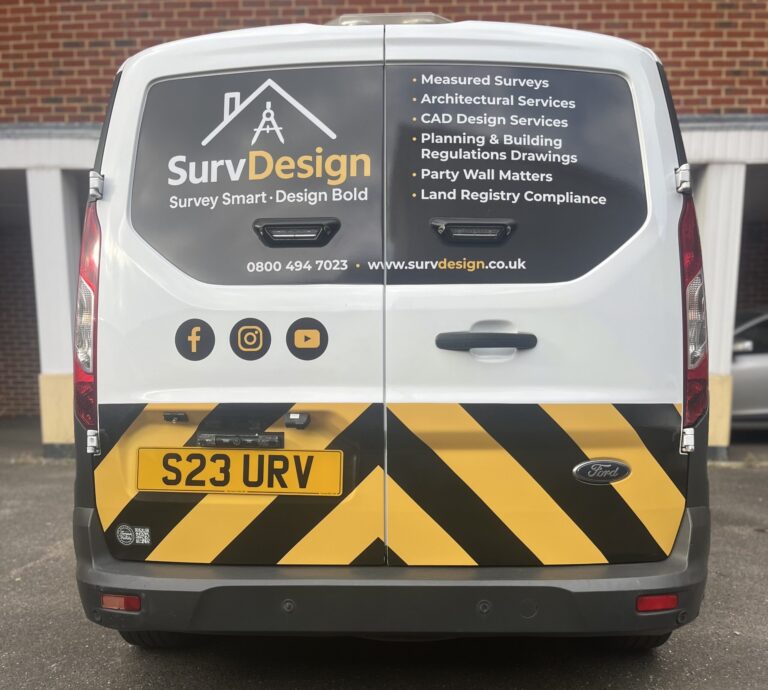
Building Regulations Plans Essex - SurvDesign Are Proudly Rated 5 Stars on Google
Let’s be honest — dealing with building regulations details and your Councils Building Control department probably isn’t what you dreamed of when you imagined improving your home.
That’s where I come in.
I’m Kev Miller, I’ve spent the last 28 years helping property owners, builders, and professionals navigate the technical side of construction.
I’ve provided architectural services, structural calculations, and building regulations drawings to clients across Essex, London and the entire South East region of the UK.
When you work with us, you’re not just hiring a architectural design team — you’re working with local experts who know the system, speaks the council’s language, and genuinely cares about getting your project moving forward.
This is your home. We’re just here to help you build it right.
Meet Kev Miller, Founder. Problem Solver


Let’s be honest — dealing with building regulations details and your Councils Building Control department probably isn’t what you dreamed of when you imagined improving your home.
That’s where I come in.
I’m Kev Miller, I’ve spent the last 28 years helping property owners, builders, and professionals navigate the technical side of construction.
I’ve provided architectural services, structural calculations, and building regulations drawings to clients across Essex, London and the entire South East region of the UK.
When you work with us, you’re not just hiring a architectural design team — you’re working with local experts who know the system, speaks the council’s language, and genuinely cares about getting your project moving forward.
This is your home. We’re just here to help you build it right.
Meet Kev Miller, Founder. Problem Solver


Your Guide to Building Regulations Plans and Drawings in Essex
If you’re thinking of tackling a building project in Essex, understanding building regulations and planning requirements is a must. Whether you’re dreaming of a new extension, open-plan kitchen or that loft conversion you’ve talked about for ages, getting your plans and technical drawings right is the first, often most important, step.
As someone who’s spent decades guiding homeowners and property pros through building regs, I’ve seen just how much smoother a project goes when you start with proper drawings and compliance in mind. This guide breaks down what you need to know, why regulations truly matter, and how clear, accurate drawings are your best investment.
Let’s steer you towards a successful approval with SurvDesign’s proven approach, saving you stress, money and time from the get-go.
Understanding the Role of Planning and Why Drawings Matter
Let’s face it, building regulations and planning can seem a maze at first glance. But after 28 years helping folks like you across Essex and the South East, I can tell you: the roadmap always starts with proper plans and technical drawings. Regulations aren’t just about ticking boxes, they’re there to make sure your project’s safe, lawful and up to standard, whether you’re putting up a simple porch or embarking on major home renovations.
Now, planning is often confused with building regulations, but there’s a subtle difference. Planning considers the development’s visual impact, scale and how it fits into your neighbourhood. That’s where your initial plans and design come to life, think about how your extension will look from your garden, or if your neighbours might object. But building regulations are a different kettle of fish. These regulations focus on the nuts and bolts, ensuring that what you want to build is structurally sound, energy efficient, fire safe, and, most importantly, habitable for your family. That’s where building regs and detailed technical drawings step in.
So, why do these technical drawings matter so much? Put simply, your approved plans are your project’s bible. They’re what your builder follows on-site, what Building Control inspects, and what councils refer to for approval. A good drawing does more than show what the finished project will look like; it’ll capture the nitty-gritty, beam sizes, insulation, escape windows, the correct distances from boundaries, and even ceiling joist details. Imagine explaining all that with a rough sketch; you’d soon be sent packing by your council’s planning or building regs departments.
In my experience with SurvDesign, the homeowners who invest in detailed, regulation-ready plans from the outset face far fewer headaches. Builders stick to the technical drawings, so there’s less risk of “that’s not what we agreed” disputes. You’ll avoid those sneaky costs that crop up later too, like when Building Control spots a fire safety issue or realises your new space isn’t properly insulated. I’ve sorted countless projects where a few tweaks on a drawing upfront saved major hassle further down the line.
Planning and building regulations are rooted in clarity. If your plans or technical drawings aren’t crystal clear, your project can get held up, sometimes for weeks, while everyone tries to make sense of what’s meant to be built. That can push back start dates, upset your builder’s schedule, or even land you in hot water with your local authority. The regulations themselves often change, new fire safety rules, shifts in insulation standards, or energy efficiency targets, so you need a design partner who lives and breathes the latest guidance. That’s exactly what you get with my team at SurvDesign.
And don’t underestimate the value of a full and proper checklist. For every building regs application, you need the right set of plans, supporting information, and technical notes. Forgetting one small drawing or missing a key measurement is all it takes to stall your approval. I’ve built my service to spot those pitfalls before your application even lands on the council desk, with well-thought-out plans building confidence from the ground up.
If you want planning approved, building control sign-off, and a builder who knows what they’re working from, you need solid building regulations drawings tailored to your project and your local authority. Whether you’re a first-time home improver or a seasoned DIYer, getting it right at the planning and drawing stage will save a world of stress. Take the plunge, get your plans looked at by experts, and make sure your Essex project gets moving the right way, from Day One. Ready to talk plans, technical drawings and regulations without the jargon? I’m just a call away, drop SurvDesign a message and let’s make sure your dreams stand on solid ground.
What is a Building Regulations Application and When Do You Need One?
When you’re gearing up to transform your Essex home with an extension, loft conversion, or major refurbishment, knowing when to make a building regulations application is key. Unlike planning permission, which deals with how things will look from the outside, regulations approval ensures what you build is actually safe and up to scratch on the inside, think structure, energy, and fire safety.
If you’re adding rooms, knocking through walls, or even upgrading thermal performance, chances are you’ll need building regulations approval before a builder even lifts a hammer. Over the years, I’ve seen first-hand how the right plans and a clear checklist can clear the path to fast, hassle-free approval.
Plans Building: Making the Process Smooth for Essex Homeowners
If you’re a homeowner in Essex looking to turn your property dreams into reality, understanding the ins and outs of a building regulations application is essential. As someone who’s been helping folks navigate approval and compliance for nearly three decades, I know that the most common stumbling block isn’t the building itself, it’s the paperwork, plans, and knowing exactly how to apply. Building regulations aren’t a formality; they’re the standards that keep your home safe, comfortable, and future-proofed. Whether you’re dealing with building control, an approved inspector, or working out what goes into a full plans submission, the success of your project hinges on getting these details right from the start.
Let’s start with the basics. Building regulations approval is needed for most structural changes, extensions, garage conversions, wall removals, or adding bathrooms in new locations. Even some internal alterations demand approval. The process, in practice, means demonstrating that your plans meet regulations on structure (think: will it stand up?), fire safety, thermal insulation, drainage, electrics, and more. With all these requirements, you’ll want a robust set of plans building confidence with every party involved: you, your builder, and building control alike.
You’ve got two main roads to approval: the full plans route or a building notice. With the full plans application, you’ll submit a detailed package, plans, technical notes, and calculations, to your local authority or an approved inspector. It’s the safest bet for larger projects, because you’ll get a thorough check of all your drawings before work starts. Building control reviews the details and grants approval if everything checks out, minimising surprises mid-build. This approach gives peace of mind, not just that your project will run smoothly, but also that you won’t face costly rework or hold-ups from last-minute queries.
Alternatively, there’s the building notice route, a quicker pathway designed for smaller, straight-forward works. You notify building control of your intentions at least two days before work begins, and they inspect as things progress. Sounds easier, but there’s a risk: if what you’re building doesn’t comply, you could be forced to redo costly work at your own expense. That’s why, for most projects (lofts, extensions, any structural works), my advice is always: full plans first. It’s a more secure foundation for your approval and avoids headaches down the line.
The process itself can feel overwhelming, but that’s where partnering with a knowledgeable architect or structural engineer pays off. At SurvDesign, we speak council’s language, every detail on your plans is tailored to your local authority’s specific expectations. We provide a comprehensive checklist for every regulations application: measured surveys, existing and proposed floor plans, section and elevation drawings, roof plans, and technical statements for insulation, fire protection and structure. Each piece supports your approval, giving building control or your approved inspector zero reasons to dig their heels in.
In my experience, a good set of plans building trust before a single brick is laid. Your builder gets crystal clear instructions, reducing risk of error, delay, or dispute. Building control can approve with confidence because every aspect, beam sizing, window spec, fire escape routes, drainage, matches the regulations word for word. The end result? Regulations approval with far fewer bumps in the road.
Finally, don’t underestimate the importance of your project’s unique checklist. Forget one item, a key drawing, a structural calculation, or a technical spec, and your application can grind to a halt while you scramble to fill the gap. We make sure every tick box is checked before your submission even hits the council’s inbox, so your Essex home improvement stays on track. Whether you’re wondering how to apply, what a full plans submission involves, or what exactly building control wants to see, don’t hesitate, get in touch for a chat. With SurvDesign, it’s all about making your approval journey as straightforward and stress-free as possible. Your dream build deserves nothing less.
Building Regulations Drawings Explained
When it comes to building in Essex, there’s one thing you can’t skimp on: building regulations drawings done right. Whether it’s a kitchen extension, loft conversion, or an open-plan revamp, your drawings form the backbone for getting approval and ensuring your project’s built to last. From that first measured survey, through every technical detail, to the final, council-ready plans, the process is all about making your vision bulletproof. At SurvDesign, our service blends years of East London know-how with a friendly approach that takes you from blank page to foolproof, approved documents, making sure every regulation and construction detail is covered, start to finish.
From Initial Survey to Full Plans: What You Get with Our Drawings Service
If you’ve ever wondered what you’re actually getting when you hire a team like SurvDesign for building regulations drawings, let me walk you through it, start to finish. We don’t just do a quick sketch or churn out a set of generic plans. Every job we take on starts with a proper measured survey, using the latest tech (LiDAR scans, if you’re curious). This means every inch of your home is mapped out in detail, so nothing’s left to chance. If you’re planning a conversion or dreaming up something new, having every measurement nailed at the start makes all the difference.
Once we’ve got the survey sorted, that’s when the real work begins. Drawing up building regulations plans means getting into the nitty-gritty: from floor plans that clearly lay out your new spaces, elevations that show how your project will look in context, all the way to construction details, timber specs, insulation thicknesses, ventilation routes, and more. Builders and building control (and those approved inspectors!) will all want to see that every aspect of the regulations is accounted for in your drawings. With years navigating the ever-shifting requirements, I’ve built up a detailed understanding of the approved documents that councils across the South East expect.
It’s not just about ticking boxes, either. Good technical drawings move your project forward by solving problems before they arise. Take timber construction, a staple feature in many Essex renovations. We make sure every structural detail is spelled out, right down to beam sizing, fixings, and fire-proofing. That way, your builder won’t be left scratching their head, and you won’t risk a failed inspection or, worse, a dangerous build. With larger jobs, you’re likely to need structural calculations alongside the regulations drawings, and we coordinate that too, bringing everything into one comprehensive package. This helps cut out delays, finger-pointing, and costly rework.
Regulations approval hinges on clarity. Every plan must speak the same language the council does, with labels that match approved documents and an index that details each drawing (plans, elevations, sections, technical notes, you name it). Our full plans submission includes detail for every construction element, from wall buildup and floor joist arrangements to glazing specs and escape windows. Want to convert your loft? We’ll sort all the detail around new floor loads and means of escape, plus insulation upgrades so you’re cosy and compliant from day one.
But there’s more to submission than just drawings. The regulations application also includes all supporting information: specification notes, thermal calculations, fire safety layouts, drainage plans, and even the site and location plans that building control expects as standard. Skimping on any part of the approval drawings bundle can hold up your control approval or let gaps slip through the net. Over the past 28 years, I’ve spotted every council quirk, so every application we submit is double-checked to give you the best possible chance of a swift approval.
Your builder, too, benefits hugely from good, clear technical drawings. It takes the guesswork out of construction, means their pricing’s spot-on, and helps avoid the classic “but that wasn’t on the plans” argument mid-build. Technical drawings save you money because everything’s there in black and white for every trade to follow. And let’s not forget: building control want to see regulations compliance in every detail. If that isn’t crystal clear, they’ll come back with questions, or, even worse, a refusal. That’s a delay nobody needs.
Choose SurvDesign and you’re not just buying a drawing service, you’re getting my decades of experience navigating building regulations, producing approval drawings that tick every box, and solving problems before your project gets off the ground. Every full plans package is bespoke, easy to follow, and matched perfectly to your Essex property and council. If you want your application to move quickly and your builder to hit the ground running, this sort of technical detail and drawing quality really is the best investment you can make. So, if you’re ready to get the plans, drawings, and technical guidance that’ll see your project through to control approval, drop me a line at SurvDesign. Let’s get building, the proper way, from that first survey to the last signed-off plan.
Checklist for Submitting Full Plans: Don’t Miss a Step
Tackling a building project in Essex isn’t just about bold ideas and creative designs, it’s about ticking every box so you stay on track, avoid delays and push through to approval on the first try. Submitting full plans for building regulations approval means much more than filling out a form; it’s about showing building control you’ve thought of every regulation, every detail, from insulation specs to structural strength. With nearly three decades experience guiding home improvers through construction’s technical maze, I’ve witnessed countless projects stall for want of the right checklist, plans, or drawings. Let’s break down how you can get your paperwork and plans in order, use the approved documents wisely, and keep your construction journey smooth, so you reach approval and get building with peace of mind.
Key Tips to Streamline Your Building Project and Avoid Delays
When it comes to getting your building regulations application right the first time, I can’t stress enough: your checklist isn’t just paperwork, it’s your project’s secret weapon. Over the years at SurvDesign, we’ve seen even the most straightforward construction jobs hit snags because one small detail slipped through the net. It’s why every successful full plans submission starts with a properly thought-out checklist, built from real-world experience, technical know-how, and a good working knowledge of approved documents and local regulations.
First, let’s talk plans and drawings. Your full plans package should always kick off with accurate, up-to-date measured drawings, showing existing layouts and all proposed changes. Builders, building control and even your future buyer rely on clear, scaled plans, so get these right. We include floor plans, elevations, sections, and, if you’re planning a conversion or working with timber, details right down to joist spacing and insulation thickness. Don’t just hope you’ve got this covered; double-check your checklist with reference to the approved documents for every construction detail. Forgetting insulation detail or not specifying the type and depth of timber for a new floor is a surefire way to delay your approval.
Next up: supporting information. Your builder and the approval authority will expect calculations and details matched to regulations, not vague notes or “to be confirmed” blank spaces on your plans. If you’re using structural timber, let’s see those floor and roof loadings, timber sizes and fixings. If you’ve got tricky insulation targets (especially with all the recent updates to Part L of the regulations), reference the exact insulation type and thickness, and add U-value calculations where possible. Including this upfront removes all guesswork for building control and shows you understand the regulations in depth.
Forgetting to include or label a key plan, say a roof plan, site location plan, or even a fire safety layout, will bring your project grinding to a halt. That’s why I always advise my clients in Essex: have a second set of eyes look over the entire full plans package, using your checklist as a guide. It can be the difference between a rubber-stamped approval or a string of return emails asking for more detail. And don’t skimp on technical notes either; label every plan with the regulation it applies to (like Approved Document B for fire safety or Part L for insulation), and include construction notes about things like timber treatments, insulation continuity, and floor build-ups.
But there’s more to submission than just drawings. The regulations application also includes all supporting information: specification notes, thermal calculations, fire safety layouts, drainage plans, and even the site and location plans that building control expects as standard. Skimping on any part of the approval drawings bundle can hold up your control approval or let gaps slip through the net. Over the past 28 years, I’ve spotted every council quirk, so every application we submit is double-checked to give you the best possible chance of a swift approval.
Another vital part of the submission is responding to local quirks. Different Essex councils (and their building control teams) often have their own preferred arrangement for documents, and their own “pet” issues, maybe floor fire-protection or the way insulation gets shown in converted lofts. Check their website or talk to someone who’s done it before (that’s where having SurvDesign in your corner really pays off) to tailor your checklist and documentation to the local authority’s taste. This proactive approach saves you weeks waiting for approval and helps streamline the entire building project.
No checklist is complete without ensuring your plans and specification satisfy all the relevant regulations. Go through Approved Documents A (structure), B (fire), C (site prep), E (resistance to sound), F (ventilation), L (conservation of fuel and power/insulation), and whatever else fits your specific build, especially if you’re planning works involving timber floors, conversions, or upgrading insulation. Each drawing and note should clearly show compliance: for example, you might highlight fire escape routes, specify insulation thickness, show ventilation strategies, or provide detail for timber beams over new openings.
Finally, always keep a copy of everything, including correspondence about your application and any changes you make along the way. Builders, building control, and future surveyors may need to check back on details months or even years after your plans gain approval. Solid, well-organised documentation isn’t just for council sign-off, it keeps your builder on track and your investment protected.
If this all sounds daunting, remember: at SurvDesign, we live and breathe plans, regulations, and the full plans application process. From the first detail to the final sign-off, we build a robust checklist into every project, tailored to suit Essex councils and your unique build. So if you want to avoid delays, get your project moving, and gain that precious control approval first time, your best move is to work with pros who know the ropes and care as much about your outcome as you do. Get in touch, and let’s make sure your next building project sails through, stress-free.
